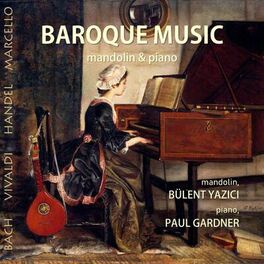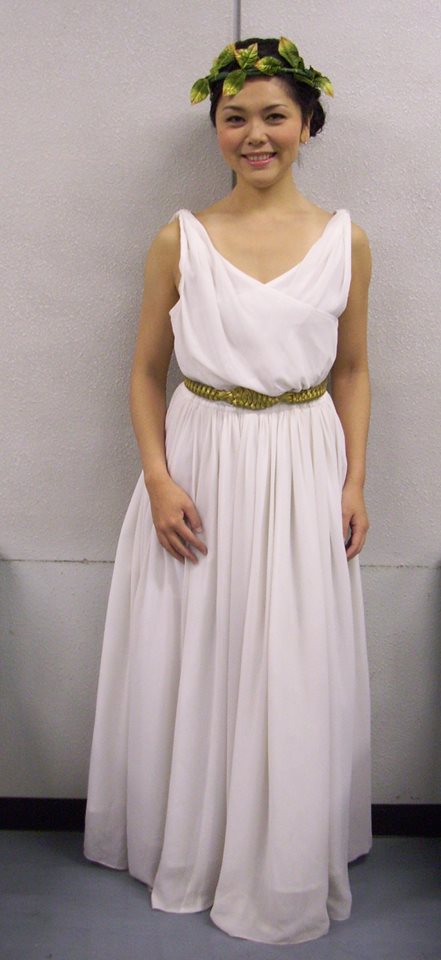- Johann Sebastian Bach (31 March O.S. 21 March 1685 – 28 July 1750) was a German composer and musician of the Baroque period.He is known for instrumental compositions such as the Brandenburg Concertos and the Goldberg Variations, and for vocal music such as the St Matthew Passion and the Mass in B minor.Since the 19th-century Bach Revival, he has been generally regarded as one of the.
- Johann Sebastian Bach, Antonio Vivaldi, Saint Paul Chamber Orchestra, Isaac Stern, Pinchas Zukerman, Richard Killmer - Bach / Vivaldi: Concerti For 2 Violins / Bach: Concerto for Violin and Oboe.
- WATCH 'MultiPiano' OTHER VIDEOS AT: Ensemble: Tomer Lev, Berenika Glixman, Daniel Borovitzky, Raviv Leibzirer Tel Av.
- The concerto has similarities with Vivaldi's highly virtuosic Grosso Mogul violin concerto, RV 208, which Bach had previously transcribed for solo organ in BWV 594. It is one of Bach's greatest concertos: in the words of Jones (2013) it 'conveys a sense of huge elemental power.'
Bach, Vivaldi, Handel
Johann Sebastian Bach was a composer, organist, harpsichordist, violist, and violinist of the Baroque Period. A Germany native, he enriched many established German styles through his sense of rhythm and organization. Bach many pieces, which were appreciated for their intellectual depth, technical command, and artistic beauty.
He was born into a very musical family, where his father, Johann Ambrosius Bach, was the director of the town’s musicians. All of his uncles were professional musicians. Bach also sang, and he went to school pursuing his choral skills. After graduating, he held several musical posts across Germany; he served as Kapellmeister(director of music) to Leopold, Prince of Anhalt-Köthen, Cantor of Thomasschule in Leipzig, and Royal Court Composer to August III. With the marriage of his first wife (and second cousin), Bach became the father of 7 children. After her death the musician remarried, and had a total of 20 children before he died. His health and vision declined by 1749, and he died at 65 years old. Historians believe that his death was caused by a combination of stroke and pneumonia.
The collection also includes, Bach's 'Alla Manera Italiana' and other concertos in the Italian style by Bach, Marcello, and Vivaldi. The works are performed by one of the leading period instrument groups of today, Concerto Italiano and its renowned musical director Rinaldo Alessandrini.
Bach today is widely known for his genius in harpsichord and clavichord. He is now generally regarded as the master of the fugue, and as one of the greatest composers of all time.
Antonio Lucio Vivaldi, an Italian Baroque born in Venice, was a composer, priest, and renowned violinist. Nicknamed il Prete Rosso (“The Red Priest”) because of his red hair, he would become recognized as one of the greatest Baroque composers, his influence during his lifetime was widespread throughout Europe. Vivaldi is known mainly for composing about 500 instrumental concerti, especially for the violin, as well as sacred choral works and over 40 operas. His best known work is a series of violin concertos known as The Four Seasons.
Many of his compositions were written for the female music ensemble of the Ospedale della Pietà, a home for abandoned children where Vivaldi worked with. He traveled often in pursuit of opportunity, and after meeting the Emperor Charles VI, Vivaldi moved to Vienna. The Emperor died soon after Vivaldi’s arrival, and the composer died a poor man of 65, without a steady source of income. His work was popular at the time but slowed after his death, although today his pieces are once again appreciated worldwide.
George Frideric Handel was a German-British Baroque composer, famous for his operas and oratorios. He was born in 1685 to a family indifferent to music, whom thought he would pursue a career as a lawyer. Before reaching the age of 7, he seemed to have mastered the organ and harpsichord. He received critical training eventually, and within fifteen years, Handel, a dramatic genius, started opera companies to supply the English nobility with Italian opera.
Probably the most famed moment of his existence, Handel played for King George II and watched him rise to his feet at the composer’s premier. He had major success with Messiah(1742), in which he extended musical composition based upon the religious theme. He never performed an Italian opera again after this. Almost blind, and having lived in England for almost 50 years, he died a respected and rich man.Handel is regarded as one of the greatest composers of all time, with works like Water Music, Music for the Royal Fireworks and Messiah remaining popular. Handel composed more than 40 complete operas in 30 years, and interest in Handel’s operas continues to grow today.
by George Bozarth
Co-Artistic Director, Musique du Jour Presents
Last weekend I mentioned that, in addition to arranging a four-violin concerto from Antonio Vivaldi’s popular L’estro Armonico, op. 3, for four harpsichords and strings, Bach “reduced” three concertos from this set for unaccompanied harpsichord, and two more for organ. He most likely prepared these “reductions” during the period July 1713–July 1714, while he was serving as organist to the court of the Duke of Weimar and learning the new Italian style stemming from sunny Venice. I’ve placed “reduced” and “reductions” in quotation marks because, while fitting the full tutti onto just a keyboard, Bach went further and added more contrapuntal lines to Vivaldi’s texture. Some of the concertos he transposed into different keys.
Canaletto – The Entrance to the Grand Canal, Venice
Canaletto-The-Bucintoro-Venice
Canaletto-Veduta-del-Palazzo-Ducale-Venice
CONCERTO No. 3 in G major, RV 310 —> CONCERTO in F major, BWV 978
- Allegro
- Largo
- Allegro
A scalar motive, easy to hear when it returns, opens the ritornello. The solo violin offers up echos and sequences. Standing in stark contrast is the minor-key Largo, with lyrical wisps and arabesques in the solo violin supported by bleak orchestral chords (“Winter”?). Active life is rejoined in the Allegro Finale, which is all hustle and bustle, with the bass charging forward, echo effects and engaging syncopations in the upper strings, and the soloist showing off fast-note virtuosity.
Angry birds rio mac download. Vivaldi: Performed by Elizabeth Wallfisch, violin, with Tafelmusik, by Jeanne Lamond
https://www.youtube.com/watch?v=J6b7WH9Le-E
Watch how Bach adds to the left-hand imitations of the right hand’s scalar motive, to increase the movement’s dynamism. Dns jumper download mac.
Bach: Performed by the elegant young French harpsichordist and organist Benjamin Alard
https://www.youtube.com/watch?v=Uv3sUq-GJe0

CONCERTO No. 9 in D major, RV 230 —> CONCERTO in D major, BWV 972
Bach Vivaldi Concerto D Minor

- Allegro
- Larghetto
- Allegro
For this work we’ll listen to two recordings: Fabio Biondi playing the Vivaldi and Richard Egarr performing the Bach. The Allegro is announced with a group of well-spaced, snappy dotted rhythms open to interpretation — is it a slow introduction (Biondi) or an assertive overture (Egarr)? The same interpretative options are available for the central Larghetto, as witness our two recordings — is it soulfully sad, or is it melancholy yet strongly anchored? On the harpsichord Egarr’s Finale is a bold burst of sound, replete with bounding chords and improvised trills; with Biondi’s orchestra, it is a spritely, dance-like dash-to-the-finish, with quick minor-key inflections.
Vivaldi: Performed by violinist Fabio Biondi with Europa Galante
https://www.youtube.com/watch?v=Ymn1i-kMn2M
Bach: Performed by the English harpsichordist Richard Egarr, playing on a 1640 Ruckers harpsichord
https://www.youtube.com/watch?v=CACAlhcmKPM
Bach Vivaldi Trumpet
As Egarr notes, “Bach added an interesting part for the left hand in the third movement, and in the first movement he fitted a whole string orchestra onto one harpsichord, while also making the music more appropriate for keyboard.” For a demonstration of how Bach did this, see Richard Egarr’s chat at:
https://www.youtube.com/watch?v=DWYCEqH3RfE&t=os
CONCERTO No. 12 in E major, RV 265 —> CONCERTO in C major, BWV 976
- Allegro
- Largo (Vivaldi) —> Largo e spiccato (Bach)
- Allegro
The chipper ritornello Allegro, with its bouncing repeated notes, is always welcome on each reappearance. The solo violin appears with a bit of the opening motive in sequence before weaving its own extensions of fancy fiddle-work, specializing in showy cross-string playing. The Largo features contemplative dueting between soloist and first violin, often in stepwise sequences, ending in warm, secure cadences. In The English Concert’s interpretation the ritornello of the Allegro final has a galloping feeling, setting off the soloist’s rapid-fire displays of virtuosity. Yet, all ends quietly.
Vivaldi: Performed by violinist Simon Standage with Trevor Pinnock and The English Concert
https://www.youtube.com/watch?v=9bGxZMUoBh8
Bach: Performed by Robert Hill on a harpsichord built by his brother, Keith Hill, with a scanning score that allows you to see, as well as hear, the step dynamics in the tutti sections using the two keyboards, the brilliant passage-work in the solo sections, as well as how a fine harpsichordist ornaments the melodic lines, inserts poignant hesitations (especially in the Largo), and employs a wonderful variety of arpeggiation (or rolling) of full chords to create lush “orchestral sounds.” After hearing Vivaldi’s original Finale, you’ll be amazed at the incredible arrays of left-hand passage-work that Bach adds to drive the movement forward at a manic pace. You’ll need to take some deep breaths after the roiling, then crashing climax! In Bach’s hands (and Hill’s performance) Vivaldi’s quiet closing takes on a certain nobility of accomplishment.
https://www.youtube.com/watch?v=xL0LLFcJENg
During his years in Weimar, Bach also transcribed two of Vivaldi’s double violin concertos for the solo organ. We shall explore these works next week.

